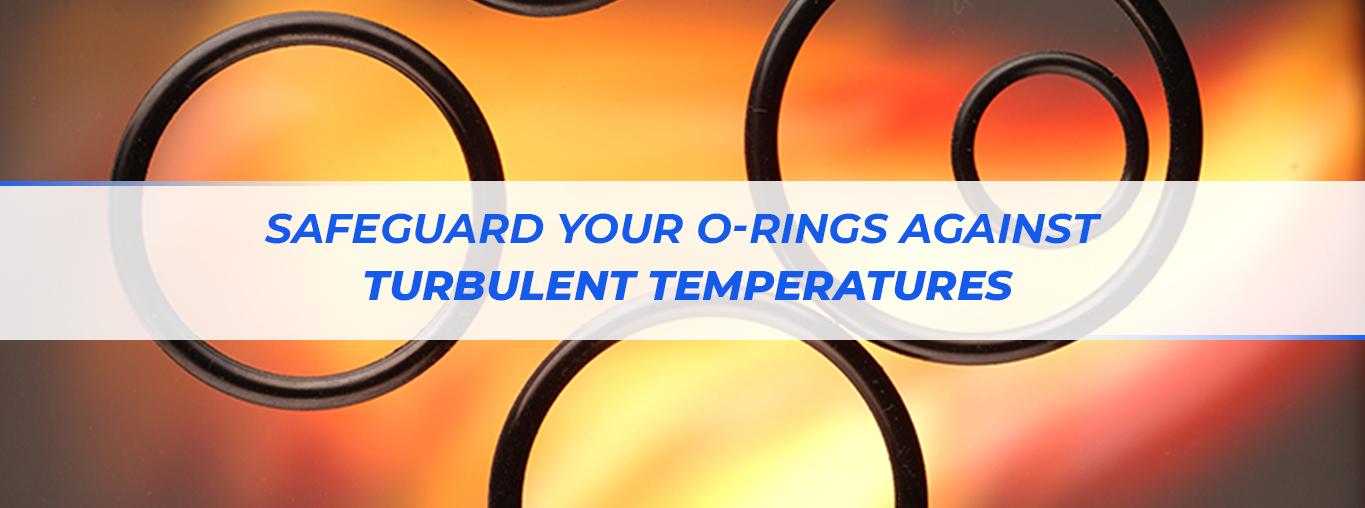Safeguard Your O-Rings Against Turbulent Temperatures
Every seal technology system is of an application that has certain unique, environmental conditions. You may have a rough estimate of these environmental conditions beforehand. These conditions will inform you of the choices you have to make with regard to the o-ring’s design and material.
Your o-ring can often be a part of seal technology that undergoes high temperatures, low temperatures, or both. In addition to that, there are varying pressures, mechanical stresses, chemical reactions, and weather that you also have to consider.
The elastomer and polymer (rubber) material used in your o-ringhas to be unwavering to these changes. Some of these o-rings are designed to resist the embrittling effect of high temperatures, while others remain elastic in low temperatures. We will give you a picture of how this works so that you understand the principles that govern how you can safeguard your o-ring from failing under extreme temperature applications.
The Reasons O-Rings Fail at High Temperatures
As the system runs over the long months, higher temperatures are known to damage rubber o-rings made of incompatible material, leading to seal failure. This endangers the efficiency of the system, causing downtime if there is a factory involved. This will naturally result in a loss of revenue.
High temperatures can influence o-rings by causing them to:
- Permanently deform i.e. suffer high compression sets
- Embrittle and lose elasticity
- Crack and blister from explosive decompression or oxidation
- Discolor from chemicals which react more in heat
- Swell
Opt for o-ring rubber material with a low compression set, to counteract the deforming effects of high temperature. Permanently deformed o-rings cause a disruption in the “seal line” between o-ring and seal casing, causing leakage. You will also want to prevent friction in the gland (or groove) where the o-ring resides. The o-ring moves against its gland, causing friction that could damage the seal. The gland design has to be compatible with the o-ring for this reason alone. Additionally, make sure lubrication is sufficient here to prevent excessive friction.
Through established test standards, you can ascertain the designated temperature ranges for the popular rubber materials used for o-rings.
Some of the o-ring materials that perform well in high temperatures:
- Perfluoroelastomer (FFKM)
- Vinyl methyl silicone (VMQ)
- Alkyl acrylate copolymer (ACM)
- Polytetrafluoroethylene (PTFE)
- Fluorovinylmethylsiloxane rubber (FVMQ)
- Hydrogenated acrylonitrile butadiene rubber (HNBR)
- Unique fluoroelastomers like FKM and AFLAS
The Reasons O-Rings Fail at Low Temperatures
The rubber materials whose temperature ranges fall relatively low are the ones you have to choose in the case of low-temperature conditions for a particular application. In the absence of compatible material selection, o-rings exposed to extreme cold will suffer these problems:
- Reduced elasticity i.e. low compression set
- Shrinkage
- Brittleness
- Loss of flexibility
Most rubber materials will shrink under lower temperatures The lack of elasticity in cold conditions will prevent the o-ring from regaining its shape after compressions. This disrupts the seal line, causing leaks. Once a leak path is formed, it often remains in the seal even when normal temperatures resume.
To prevent low temperatures from disrupting your seal line, the seal casing can be made to exert continuous pressure on the o-ring, also referred to as “squeeze.” Applying a squeeze of 30% or higher is preferable to prevent damage in cold conditions.
It’s also important to ensure the right material is selected for applications in extremely cold conditions:
- FFKM
- VMQ
- HNBR
- ACM
- PTFE
- Fluorinated ethylene propylene (FEP)
- Low-temperature nitrile butadiene rubber (LT-NBR)
- Ethylene-propylene (EPDM)
- Fluorosilicone
Need consulting for your specific o-ring application?
As you have learned, there will be o-rings with high-temperature stability and low-temperature flexibility.The materials listed here are among the most appropriate ones for both extremes of temperature, but it is always advisable that you look for an expert opinion.
Given our longevity in the field of rubber manufacturing, you can consult with our team at Harkesh for options on o-ring materials at particular temperature ranges. We will take you every step of the way until you achieve the desired objecti- ve!








